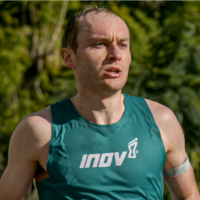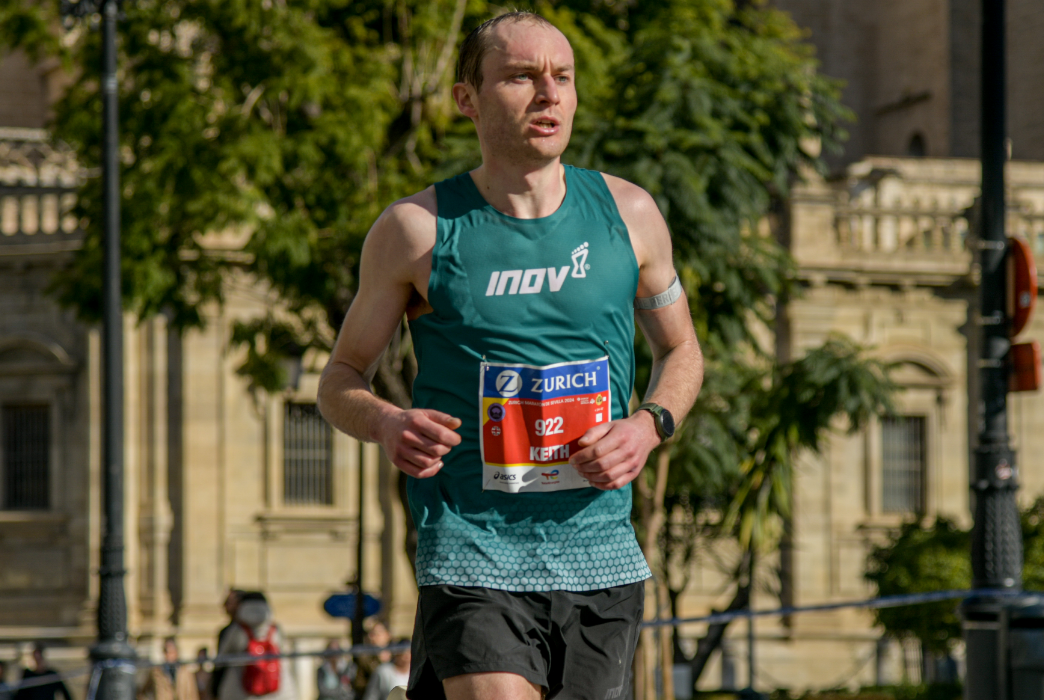
The road. It strikes fear into the hearts of many trail runners. ‘It’s too fast,’ ‘It will injure me,’ ‘It’s boring’ are just three of the more common things heard from the mouths of trail exponents when discussing road running.
And while trepidation is understandable, the reality is that a transition to road running could, in time, improve trail speed and performance when an off-road return is made.
It is, of course, more common to see runners transition from road running to trail running, with the lure of adventure and exploration hard to ignore. But a transition can be made the other way too – as proven by INOV8 ultrarunning athlete Keith Wigley who stepped off his beloved trails and onto the roads to commit to chasing down fast time at the 2024 Seville Marathon.
We asked Keith to describe how he made the transition from trail to road, to share some of his training session details, and provide tips that might help others making the same switch.
Why I transitioned form trail to road
At the end of a successful 2023 season, the long British winter with its short days and rough weather now lay ahead. Motivation during this time can be tough but I like to think of it as a period to work weaknesses.
For me, an obvious answer was speed; or lack of it. Over the last decade, ultra running has progressed so quickly and now many of the best trail runners also have excellent speed on the flat. Tom Evans recently competed at the World Cross-Country Championships, Jim Walmsley has a sub-13-minute 5k and even Kilian Jornet, a name synonymous with mountain running, has run a 10k in 28 minutes. To get better, I needed to get faster.
Before worrying about the training required, I jumped on the internet and searched for a race to keep me motivated over Christmas. The Seville Marathon, February 2024, described as one of the fastest courses in Europe – you’ll do.
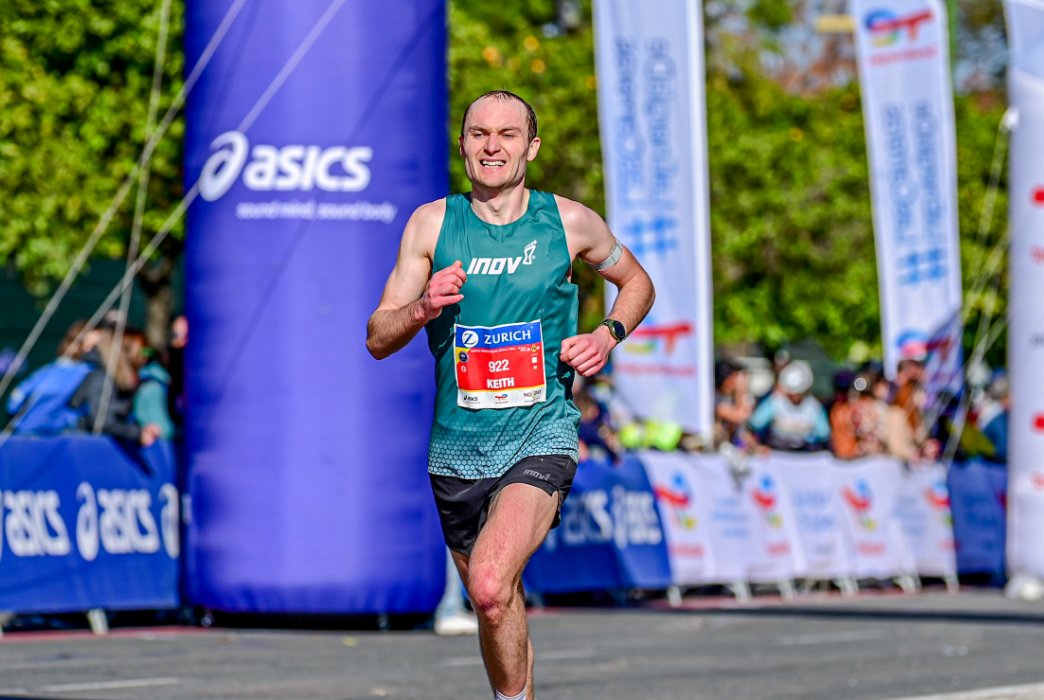
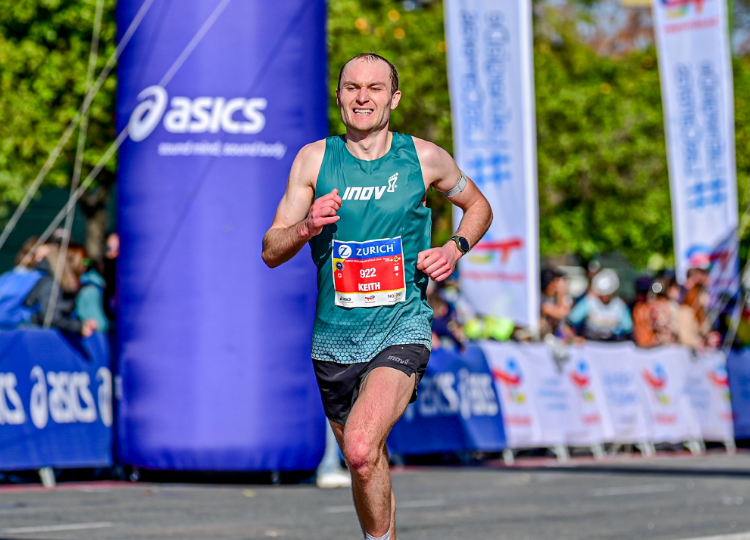
How I transitioned form trail to road
Throughout November and December, I focused – loosely – on building strength. This involved lifting things in a place they call a “gym”. I did nothing special, mostly squats and deadlifts, some single leg strength exercises, as well as things like skipping. Hopefully the one-hour strength workout below is something other runners might like to replicate.
Warm up
5 mins - dynamic stretching
5 mins - skipping / box jumps / lunges
Main sets:
Back Squat
WU: bar only
5 sets
8-10 reps
@80-120% body weight
Romanian Deadlift
WU: bar only
5 sets,
8-10 reps
@80-120% body weight
Kettlebell circuit:
3-5 sets
10 reps
Kettlebell swings
Single leg deadlift
Calf raises
Backward lunge
Step ups
Russian twist
I also started to incorporate strength training while running. A typical session here might look like 10 x 2 minutes of hard uphill running, where the first minute was high cadence and the second minute was low cadence bounding. This is a workout straight out of Kilian Jornet’s playbook. If it is good enough for him, it is good enough for me.
As the new year began, I happened to acquire a coach – Doug Stewart. Doug had been expanding his Elite Trail Team (ETT); I had applied and been accepted.
The next six weeks comprised some of the hardest training I have ever done. The idea was to gradually increase the amount of time spent running at marathon pace. Workouts varied but some of the hardest days included double threshold sessions with intervals on the bike in the morning followed by running intervals in the evening. One week out from the marathon and my final workout included 70 mins below 2:30 marathon pace.
My ‘big week’ in training for a road marathon
My two biggest weeks were like I’ve outlined below. They were six and five weeks out from the race respectively and both totalled about 100 miles.
Monday
AM – 30 min recovery run.
PM – 1 hr easy run with hill drills and hill sprints.
Tuesday
AM – 45 min bike (10 x 1min intervals @ FTP (Functional Threshold Power) / 30 min recovery run.
PM – 1 hr 20 min run with 20,15 and 10 mins @ marathon pace.
Wednesday
AM – 30 min recovery run.
PM – 1 hr recovery run or bike.
Thursday
AM – 45 min bike (with intervals above and @ FTP) / 30 min recovery run.
PM – 1 hr 20 run with alternating Z2/Z3 12 min intervals.
Friday
AM – 30 min recovery run.
PM – 1 hr easy bike.
Saturday
AM – 2 hr rolling trail run.
PM – 1 hr easy run with hill drills and hill sprints.
Sunday
AM – 2 hr 30 min run with 30, 25, 20 mins @ marathon pace.
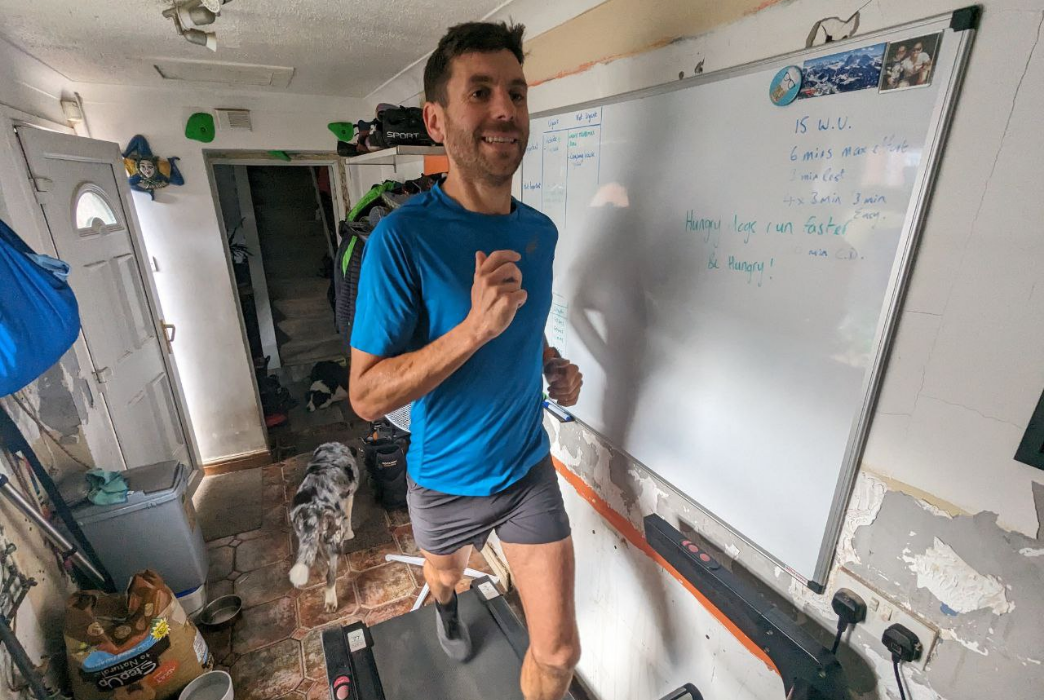
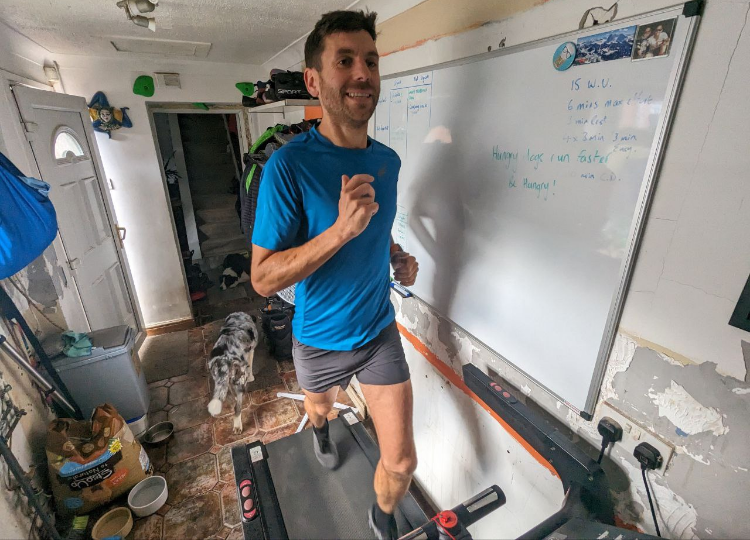
Keith’s tips on moving from trails to roads
Road surfaces are hard (obviously) compared to trails. The impact forces going through your body when running on trails are less than those when running on roads. Therefore, it is crucial you give your body time to adjust. I built up my road running gradually and still did many of my easy runs on trails.
Find a suitable pair of road shoes for both training and race day – potentially the new INOV8 ROADFLY. This shoe was not available at the time, but I have been using it for all my road workouts for the last couple of months and think it is a great training shoe. Many will still want a carbon-plated “super-shoe” for race day, and I would be one of them, but everyone still needs a durable and comfortable shoe for those everyday workouts. This shoe fits the bill.
One key piece of equipment that can become your friend in making the transition from trail to road is the treadmill. I did all my marathon paced workouts on the treadmill. I’m not saying you must do this, but I saw these clear benefits:
1. Monotony – Treadmills are boring and running a marathon on roads for hours will also probably get boring, at least in comparison to trail running. Get used to it. You need to train your mind as well as the body.
2. Pacing – The treadmill allows you to dial this in precisely. I find it much easier to set a pace and hold it on the treadmill than to hold in on the road. It’s harder to just chicken out and drop the pace compared to when you’re running outside.
3. Heat – The Seville Marathon was likely to be hot. Running on a treadmill for 2hrs+ gets sweaty!
4. Nutrition – I could have my gels and water laid out in front of me next to the treadmill and not have to carry anything in a pack during long workouts.
5. Impact – Treadmills have a bit of bounce in them, which again reduces the overall impact compared to road running.
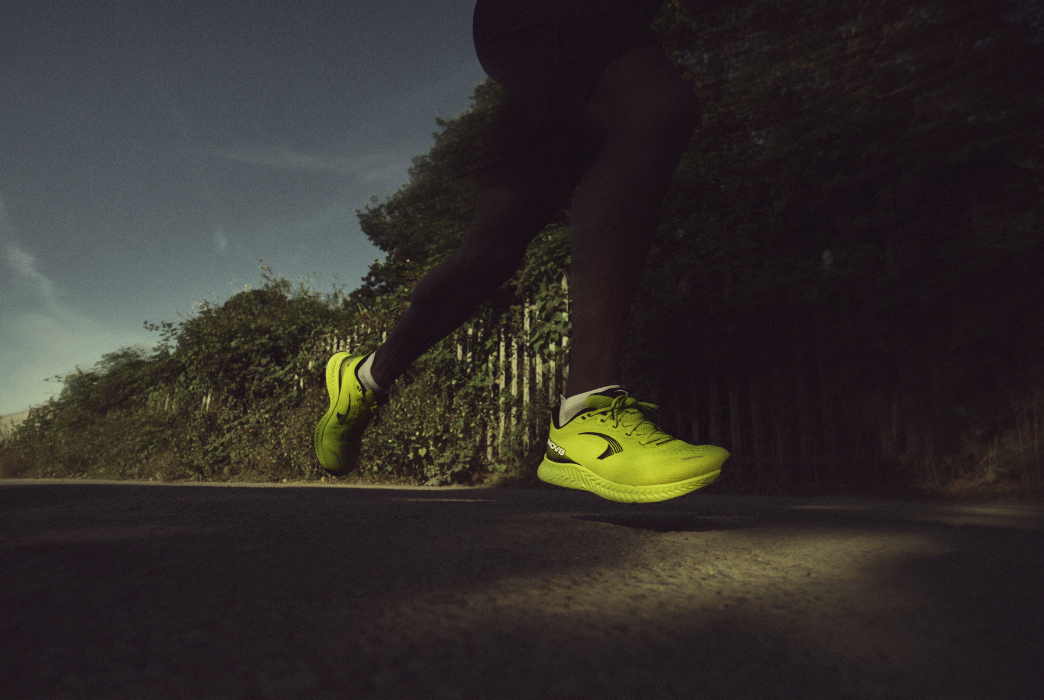
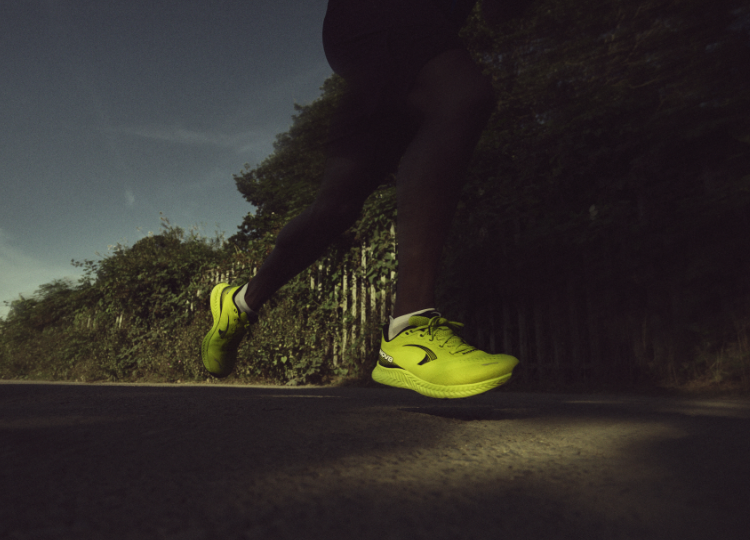
The Seville Marathon
Arriving late on Friday and the race not until Sunday, me and my support team, comprising my dad, had Saturday to explore Seville. It is truly a beautiful city and a wonderful time of year to visit to escape the British winter.
Bib collected, gear laid out and plenty of carbs consumed, it was time to get some rest before an early race start of 08:30 on Sunday.
From the start, I quickly nestled into a group and we were clipping along nicely, just a little faster than the required pace to go sub 2:30. The plan was to bank a bit of a buffer early on, knowing almost everyone likely fades in the latter stages of a marathon.
Through half-way in 1:13 and I had to make my first tactical decision. The group I was with started to splinter but I still felt strong. I could choose to maintain my current pace and be faced with an almost solo effort to the end of the race. Or I could increase the pace slightly and try to close the next group on the road. I chose the latter, hoping to regain the benefits of running in a group. The cost came in the form of elevating my heart rate, but with only an hour to go I was confident I could hold it.
A marathon really is a race of two halves. In fact, I feel like it only really becomes an actual race in the second half. Groups break down into twos or threes, and then eventually you find yourself alone, fighting it out for every place and every second.
Despite the early start, temperatures were heating up and many runners were fading. I too was dehydrated but I entered ‘ultra running’ mode and was ready for the pain of the last 30 minutes.
The half-way push to catch the group ahead had cost me any ability to kick in the final few kms, but I was able to at least hold my pace and barely faded. My facial expression might have said otherwise but I was delighted to see the finish barrier and cross well under target in 2hr 26m 55s.
As with any race, upon finishing I vowed never to do it again. By the afternoon, I was already planning my return… but not before a summer back in the mountains.
